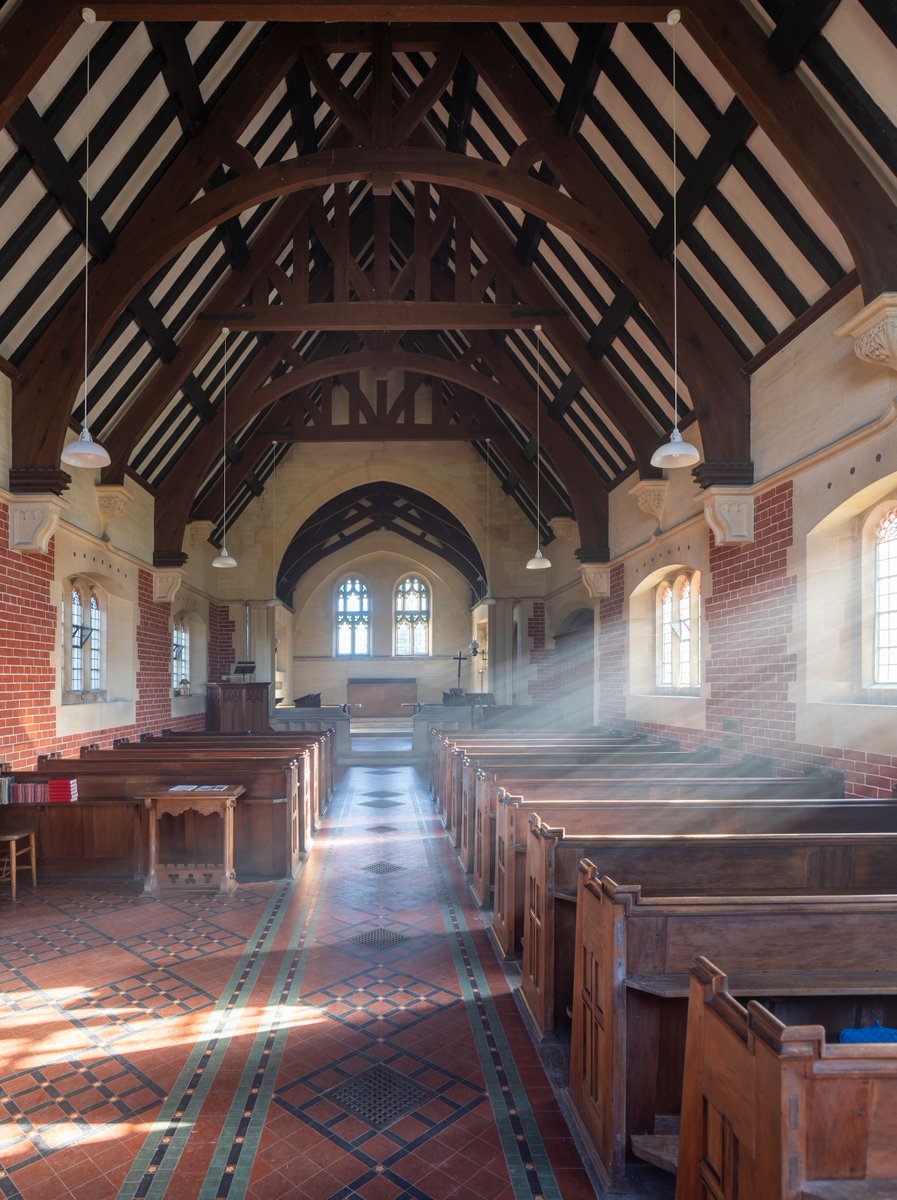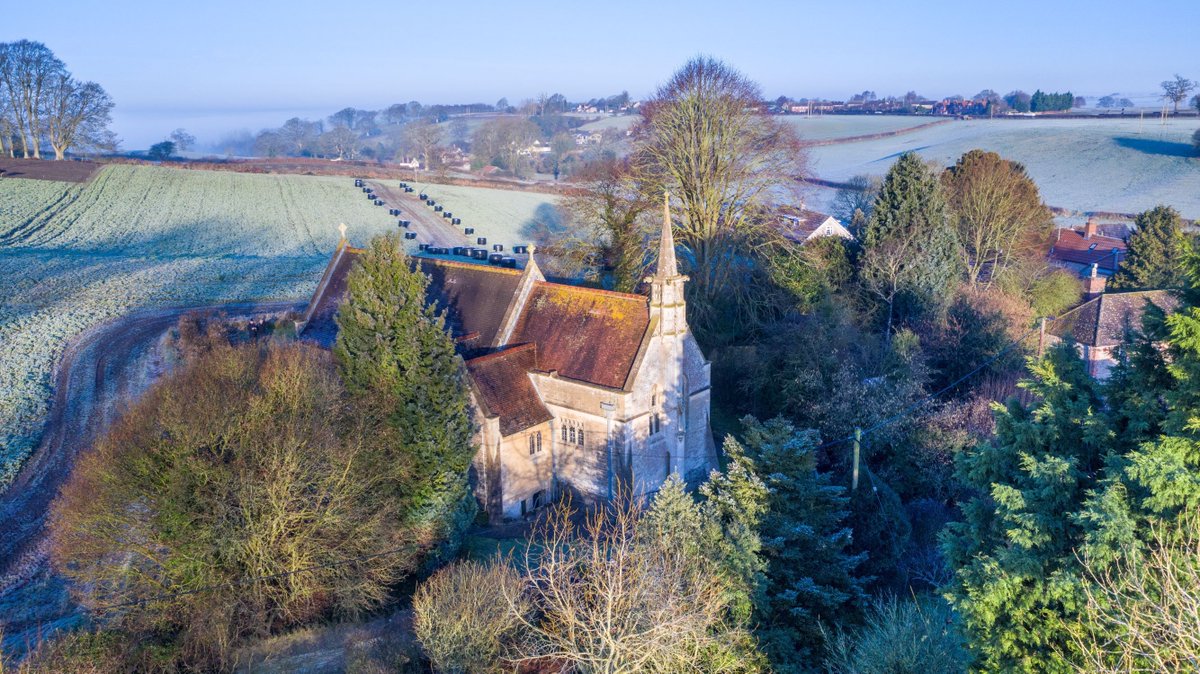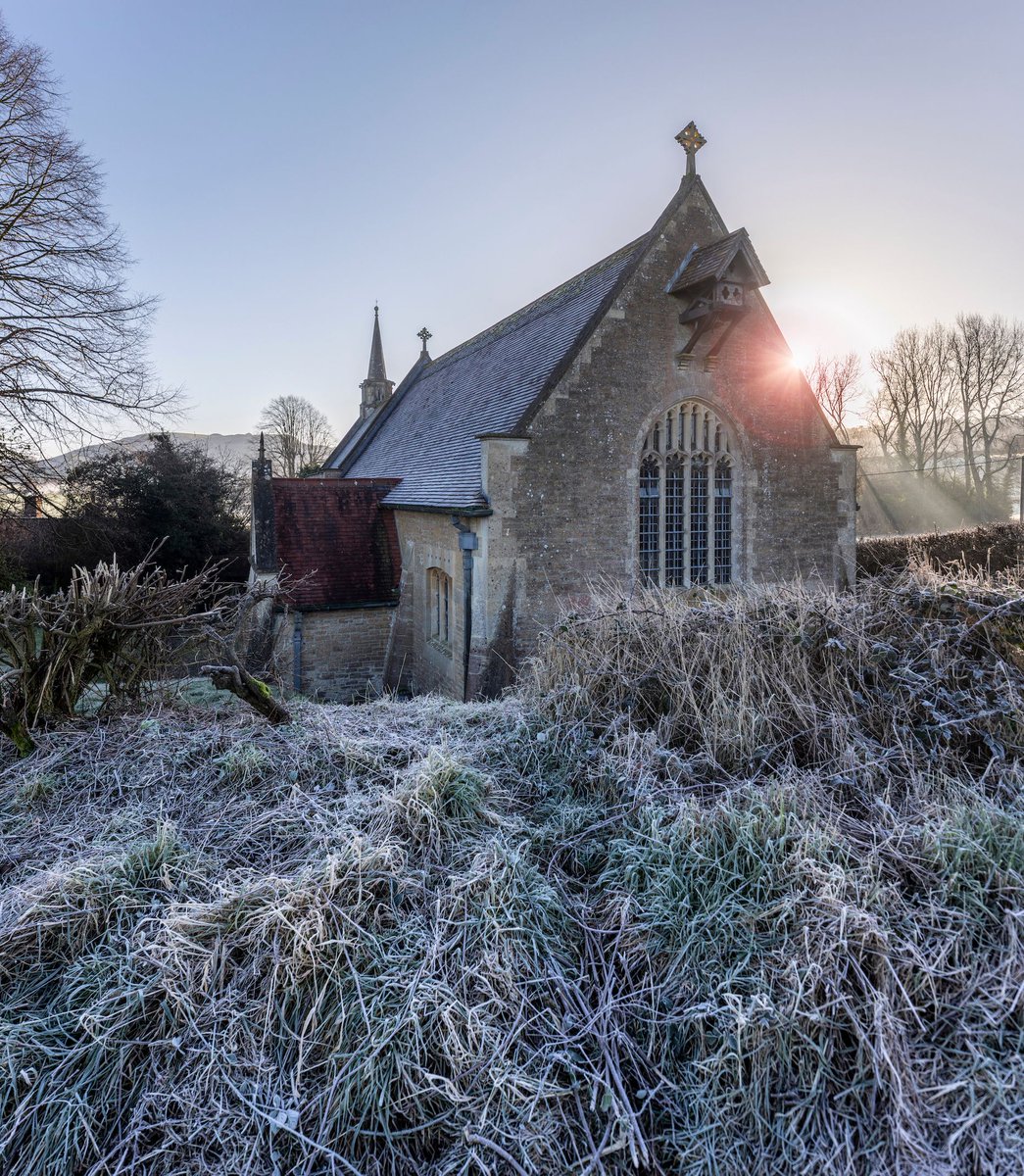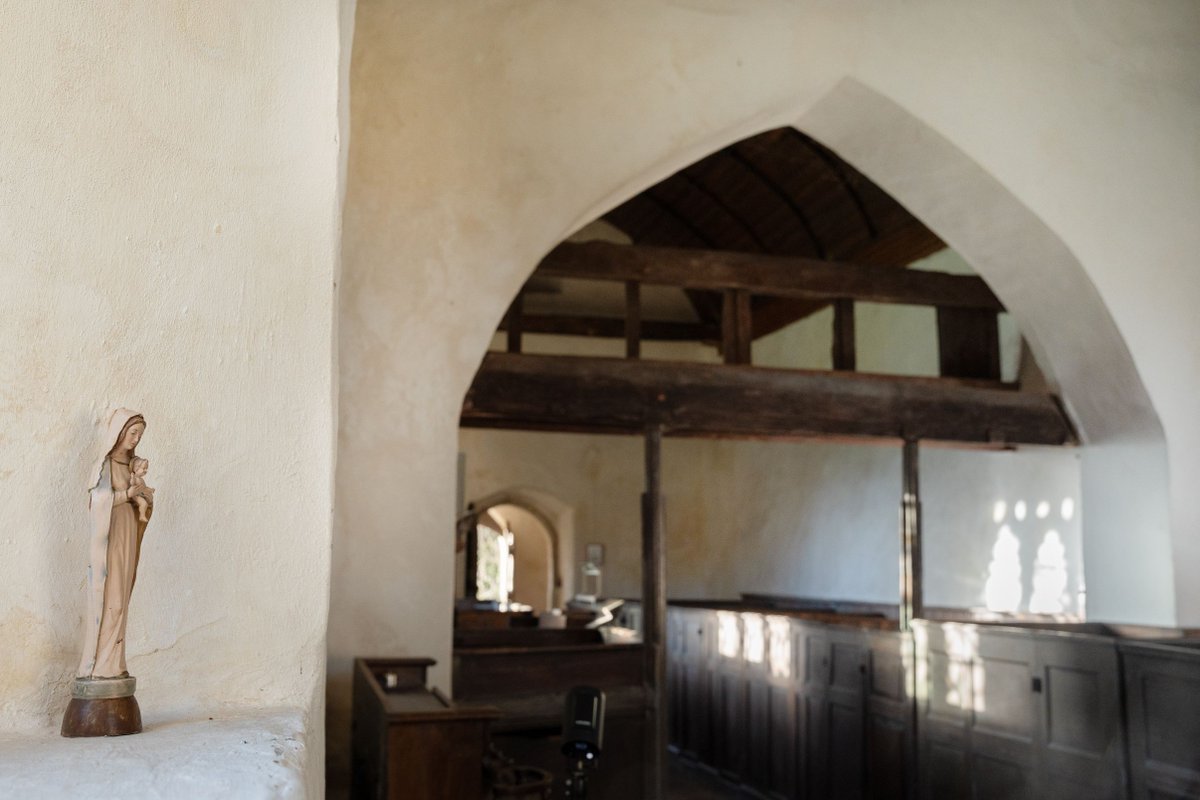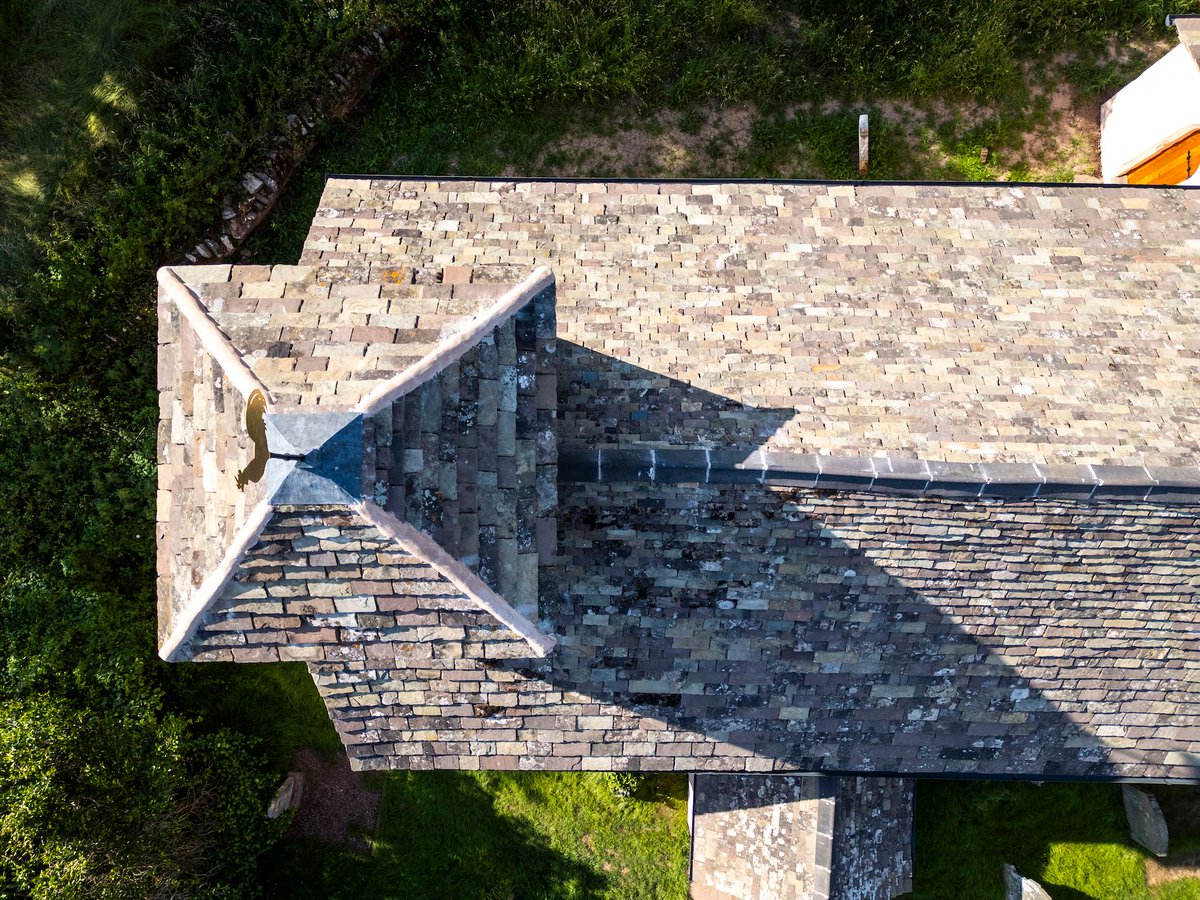Last week we sealed the transfer on the first church of 2022 to come into our care.
It’s St Andrew’s, South Runcton, Norfolk: an excellent rebuilding of a ruined Norman church on the side of the Downham Market to Kings Lynn Road, and one of Norfolk’s first Victorian churches.
#🧵
It’s St Andrew’s, South Runcton, Norfolk: an excellent rebuilding of a ruined Norman church on the side of the Downham Market to Kings Lynn Road, and one of Norfolk’s first Victorian churches.
#🧵

By 1812, St Andrew’s was a crumbling, overgrown ruin of Romanesque arch and apse. Norwich artist, John Sell Cotman’s sketch of the church at that date shows what survived when Norwich architect, John Brown came on the scene in 1839.
2/
2/

Brown rebuilt St Andrew’s in a Neo-Norman style, but the jury is out on how much Norman ruin he incorporated into his redesign. Some think he renewed the lot; others think he recut the chevron and billet decoration; some think he retained the bottom section of the arch.
3/
3/

Arch and apse aside, the west front has giant corner pilasters, a bit of zig-zagging, a dog-tooth super-arch and some blind arcading. Textbook Norman.
The south elevation has more arcading, billet-moulding and a corbel table of grotesques.
4/
The south elevation has more arcading, billet-moulding and a corbel table of grotesques.
4/

The northside is remarkable for its relative plainness. No arcading here. Just a stray grotesque or two. And an apsidal vestry with a conical roof that was tacked on in 1858. The vestry carries a date plaque with the cross of St Andrew and is riddled with asbestos.
5/
5/

St Andrew’s is a church that rewards patient, careful looking. Look that the bell-cote crowning the gable: it’s a mini triple arch structure that replicates the triple arch detail found along the south elevation.
6/
6/

Some people think the grotesques are reminiscent of Easter Island figures, others see Lego blocks but to me they are ultra-modern, stylised Norman beakheads. I love looking at them, and can’t wait to get up and learn if they were individually carved or mass-moulded.
7/
7/
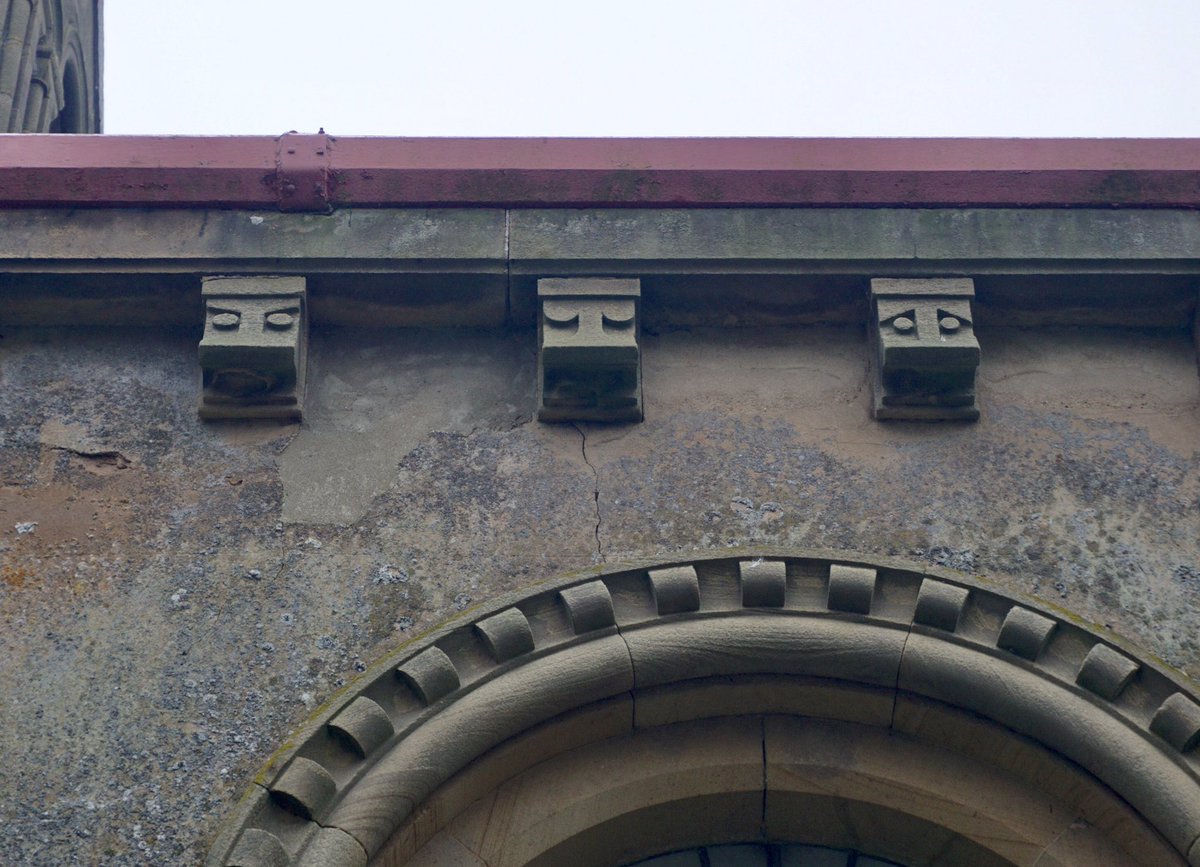
We have a LOT of repairs to do here. The church has been languishing on this busy roadside for over a decade. But we’re delighted that we could take it into our ownership, and will keep you updated on repairs and discoveries as we progress.
8/
8/
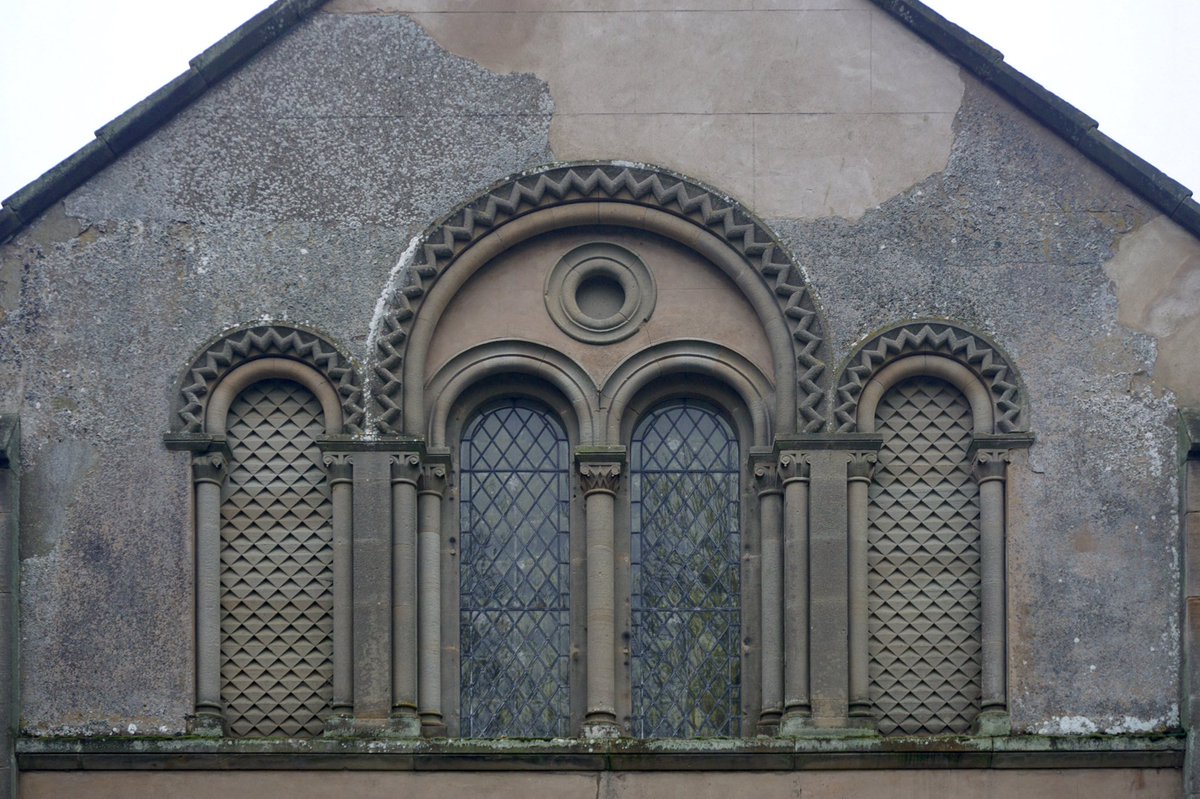
As ever, no one pays us to take on these churches. We do it with membership subscriptions and donations. Our members and donors saved this church. So, thank you.
If you would like to become a member and help us save old churches, follow this link: friendsoffriendlesschurches.org.uk/become-a-frien…
9/9
If you would like to become a member and help us save old churches, follow this link: friendsoffriendlesschurches.org.uk/become-a-frien…
9/9
• • •
Missing some Tweet in this thread? You can try to
force a refresh


